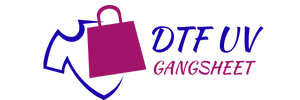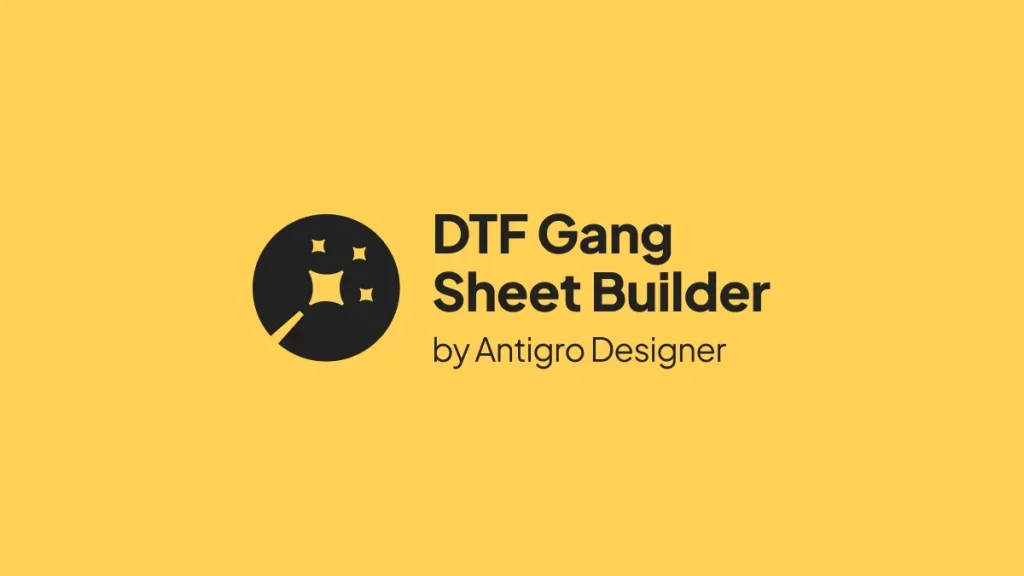The DTF Gangsheet Builder is revolutionizing the way creators and businesses approach fabric printing, making the process not only efficient but also cost-effective. This innovative tool facilitates Direct-to-Film (DTF) printing, enabling users to batch print multiple designs on a single sheet – a method known as gangsheet printing that optimizes material usage and minimizes waste. For those new to this technology, understanding how to DTF print can open up a world of possibilities in custom apparel and merchandise industries. With a comprehensive DTF setup guide, even beginners can easily navigate the complexities of the DTF transfer process. Dive into the world of DTF gangsheet printing, where creativity meets efficiency, and experience the transformative power of this cutting-edge printing technique.
Introducing the DTF Gangsheet Builder, a groundbreaking solution in the realm of fabric decoration that allows for simultaneous printing of various designs onto a single film. This versatile approach, known as gangsheet printing, is ideal for small businesses and hobbyists seeking to maximize material use while delivering vibrant, professional-quality outputs. Those eager to learn how to utilize DTF printing can reference a plethora of resources, including DTF set up guides and tutorials that demystify the DTF transfer process. With its user-friendly interface, the gangsheet builder offers an accessible entry point for anyone looking to explore the world of custom printing. Embrace the future of textile design with this essential tool, designed to simplify the journey from concept to final print.
Understanding the DTF Printing Process
DTF printing, or Direct-to-Film printing, is a process that facilitates high-quality fabric designs by directly applying ink onto a film that will later be transferred to the fabric of choice. The DTF method is recognized for its flexibility, allowing prints to be highly durable and vibrant, making it an excellent choice for businesses and hobbyists alike. The DTF printing process begins with the creation of the design, which is then printed onto the DTF transfer film using specialized inks that allow for a strong bond with various fabrics.
Following the printing, a powdered adhesive is applied while the ink is still wet. This crucial step is what enables the print to effectively transfer onto the fabric once heat is applied, establishing durability and vibrant colors in the final product. Understanding how to manage the DTF printing process is essential for anyone interested in custom fabric designs, giving insight into achieving the best quality printing.
Essential Equipment for DTF Gangsheet Printing
To begin your journey with DTF gangsheet printing, you’ll need to invest in several essential pieces of equipment. Primarily, a reliable DTF printer—often modified inkjet models or dedicated printers like those from Epson—will serve as the heart of your operation. Additionally, a good heat press is necessary for ensuring that designs transfer effectively, along with powder adhesives and DTF transfer films, which are all crucial for achieving high-quality prints.
In recent years, suppliers have made it easier to find the right tools and materials needed for successful DTF printing. Many online vendors and printing supply websites provide bundles specifically tailored for DTF printing, ensuring that users have all they need to get started, including detailed guides and support options. Investing in quality equipment not only enhances the printing experience but also significantly impacts the final product’s quality.
Design Considerations for Effective DTF Printing
Designing for DTF printing requires careful consideration of several factors to ensure optimal results. One of the most critical aspects is the resolution of your images; setting your designs to 300 DPI will lead to crisp, detailed prints. Moreover, it is advisable to use vector graphics, as they allow for more versatile designs that maintain integrity and scalability without losing quality—vital for gangsheet layouts that might include diverse images and sizes.
Additionally, selecting the right color profiles and formats is paramount in the design preparation stage. Reducing the risk of color mismatches or quality loss provides you with designs that not only appear vibrant when printed but also align perfectly with your intended aesthetic for fabric applications. Utilizing software optimized for DTF, such as Adobe Illustrator or specialized DTF design programs, can greatly aid in achieving professional results.
Navigating the DTF Transfer Process
The DTF transfer process is a critical piece of the puzzle when it comes to successfully applying your designs to fabric. After preparing your design and printing it onto the transfer film, the application of the powdered adhesive is a decisive step; without it, your print might not adhere properly when heat is applied. This adhesive acts as the medium through which the ink bonds with the fabric, ensuring long-lasting results that stand the test of time and wear.
Understanding the nuances of the heat transfer phase is equally important. Factors such as time, temperature, and pressure settings during the heat press operation can vary significantly depending on the fabric type used. Experimenting with these settings is essential for discovering the most effective combination for your specific materials, ultimately enhancing the quality and durability of your prints.
Tips for Successful Heat Pressing
Heat pressing is the final crucial step in the DTF printing process, where your design is fused onto the fabric. For optimal results, it’s essential to pay attention to the recommended time and temperature settings, which can range from 20-30 seconds at around 350°F—though adjustments may be necessary based on the specifics of the fabric types. Regularly checking the pressure applied during the heat press is also essential to ensure that the entire design adheres well without flaws.
Moreover, performing test runs on different fabric materials can help identify the correct settings and techniques to use. These trials serve as practice and provide valuable insights into how different fabrics react to the heat transfer process, allowing for a greater understanding of how to achieve consistent results with your DTF gangsheet designs.
Community and Resources for Learning DTF Printing
As the popularity of DTF gangsheet printing continues to grow, so has the availability of online resources and communities dedicated to helping beginners navigate the complexities of this printing method. Websites featuring blogs, video tutorials, and forums provide a wealth of knowledge that can be accessed anytime, allowing new users to learn from seasoned professionals and fellow enthusiasts alike. For example, sites like Printavo offer comprehensive guides that delve into DTF printing techniques, providing essential tips for newcomers.
Engaging with community forums can also foster creativity and innovation in your fabrication practices. Sharing experiences with others who are on similar paths can provide insights into common challenges faced during DTF printing processes. This supportive environment encourages growth and learning, contributing to a richer understanding of DTF methods while building connections with others passionate about printing.
Frequently Asked Questions
What is the DTF Gangsheet Builder and how does it work?
The DTF Gangsheet Builder is a specialized software tool used in DTF printing that allows users to consolidate multiple designs onto a single DTF transfer film. It optimizes material usage by maximizing the print area, which is ideal for batch printing and reduces waste.
How do I set up my DTF Gangsheet Builder for printing?
To set up your DTF Gangsheet Builder, you’ll need a compatible DTF printer, heat press, DTF transfer film, and powder adhesive. Install the software, load your design files, and adjust the settings according to the recommended DPI (300 DPI for quality prints) for optimal output.
What are the key steps in the DTF transfer process using a gangsheet?
The DTF transfer process involves several key steps: prepare your design, print it onto the DTF film with specialized ink, apply powdered adhesive to the printed area, then heat press the design onto the fabric for 20-30 seconds at 350°F.
Can I use any design software with the DTF Gangsheet Builder?
While you can use various design software, programs like Adobe Illustrator or specific DTF software are recommended for the DTF Gangsheet Builder. These tools help ensure that image layouts are optimized for DTF printing, maintaining quality and scalability.
What materials do I need for successful DTF gangsheet printing?
For successful DTF gangsheet printing, you’ll need a DTF printer (like modified Epson inkjet printers), heat press, DTF transfer film, and powder adhesive. These materials are crucial for achieving vibrant and durable prints on fabrics.
Where can I find resources and tutorials on using the DTF Gangsheet Builder?
You can find resources and tutorials on platforms like YouTube and dedicated crafting blogs. Websites such as Printavo and Heat Transfer Warehouse offer extensive guides, updates, and tips on effectively using DTF gangsheet printing techniques.
| Key Point | Details |
|---|---|
| Overview of DTF Gangsheet Printing | DTF printing is popular for its versatility, allowing multiple designs on one sheet. It’s ideal for batch printing on various fabrics. |
| Setup Requirements | Essential equipment includes a DTF printer, heat press, powder adhesive, and DTF transfer film. Recommended software includes Adobe Illustrator and specific DTF programs. |
| Design Preparation | Setting a DPI of 300 for quality prints and utilizing vector graphics are crucial for achieving the best results. |
| Printing Process | Print on DTF film with specialized ink, then apply powdered adhesive to ensure durability after printing. |
| Heat Transfer | Use a heat press at around 350°F for 20-30 seconds, adjusting pressure for optimal adhesion. |
| Post-Printing | Carefully peel off the film after cooling and perform a quality check before distribution. |
| Recent Developments and Tools | Online resources and community engagement enhance learning about DTF printing techniques and tools. |
Summary
DTF Gangsheet Builder is a revolutionary tool that streamlines the process of fabric printing, making it accessible for beginners. This guide highlights the importance of understanding setup requirements, design preparation, and the intricate processes involved in DTF printing. Equipped with the right knowledge and tools, anyone can effectively utilize the DTF Gangsheet Builder to create vibrant, high-quality prints. Engaging with online communities and utilizing available resources can further enhance your skills and proficiency in this exciting printing method.

